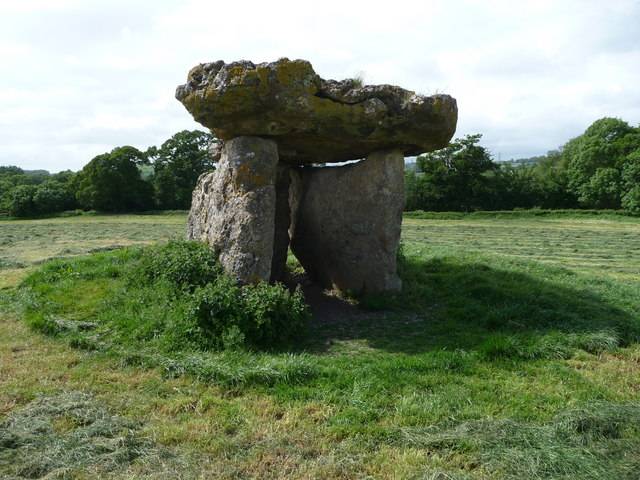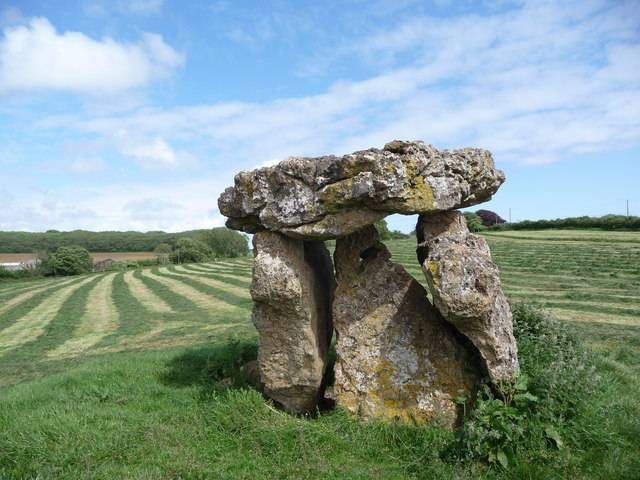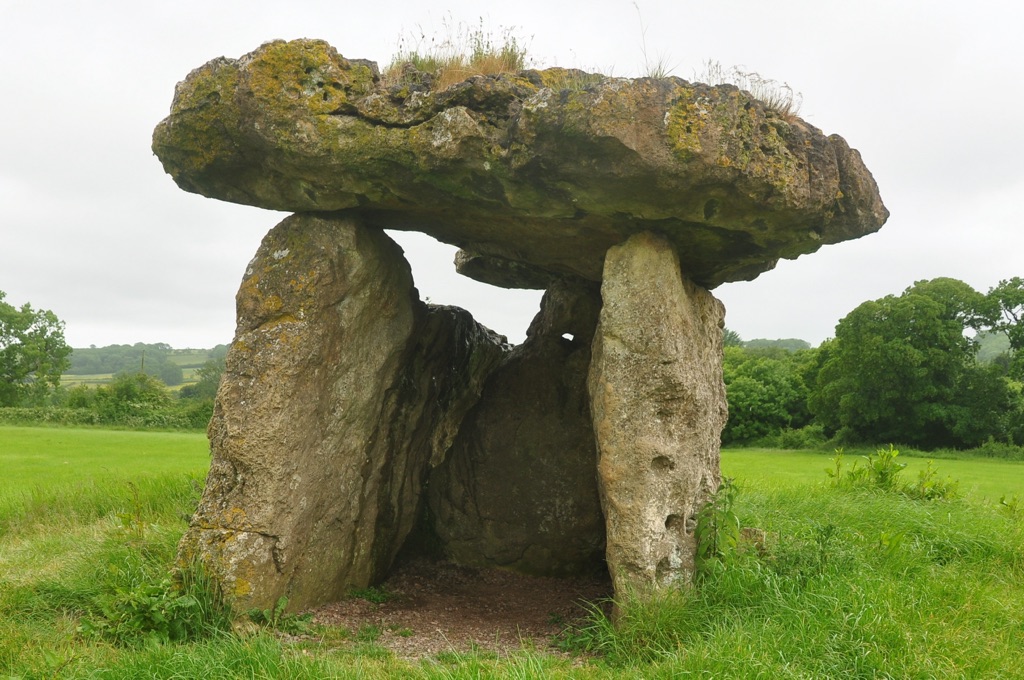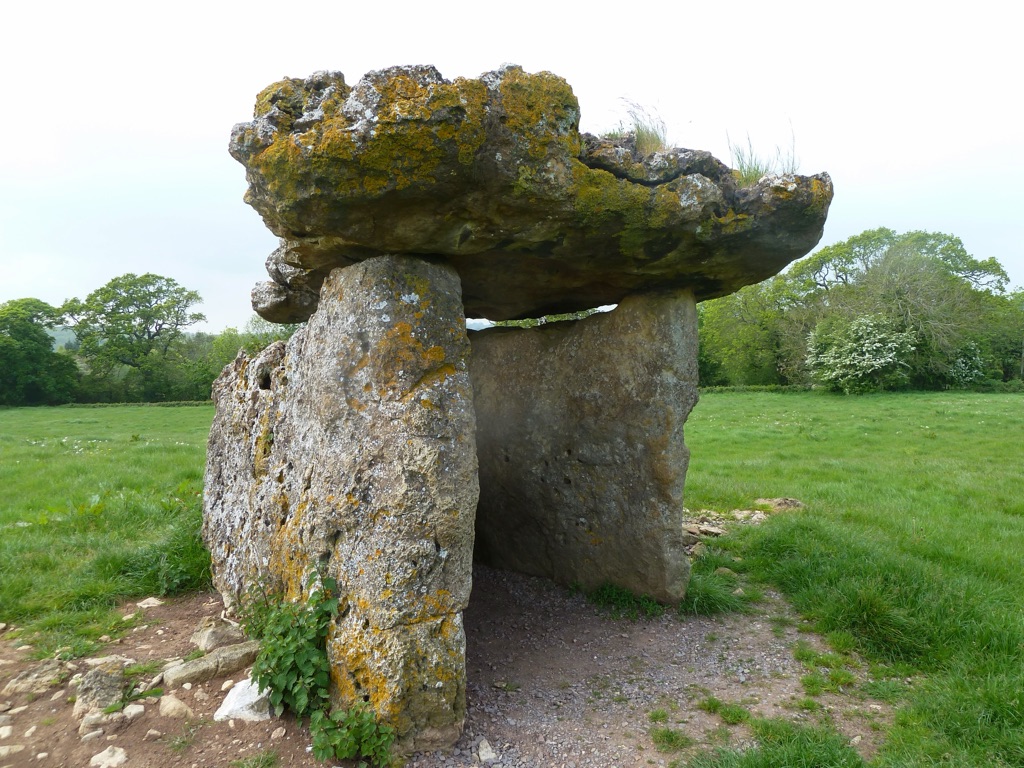St Lythans Burial Chamber is a prehistoric dolmen located in the Vale of Glamorgan, Wales. This Neolithic structure, also known as Gwal-y-Filiast, captivates historians and visitors with its large capstone balanced on three upright stones. It dates back to around 4,000 BC and is part of a series of megalithic sites in the region, hinting at a landscape rich with ancient ceremonial significance. The site, managed by Cadw, the historic environment service of the Welsh Government, remains an important link to the past and a subject of ongoing archaeological interest.
Get your dose of History via Email
Historical Background of St Lythans Burial Chamber
The discovery of St Lythans Burial Chamber dates back to the 18th century, with formal recordings by antiquarians. Notably, it was mentioned in the writings of John Aubrey and William Camden. The exact builders remain unknown, but it was likely constructed by Neolithic communities. These communities were the first farmers of Britain, leaving behind monuments as a testament to their existence.
Archaeological evidence suggests that the chamber was part of a larger complex. It may have had an extended cromlech, now lost to time. The site’s purpose remains a mystery, but it likely served as a communal burial place. Over the centuries, the site has seen various uses, including reported activity during the Roman occupation of Britain.
The chamber has not been the scene of any known historically significant events in recent times. However, its endurance through millennia speaks to its significance for past cultures. It stands as a silent witness to the changing landscape and societies that have come and gone around it.
Excavations in the early 20th century led by archaeologist William Francis Grimes provided insights into the site’s construction. The team found evidence of a mound that once covered the chamber. This suggests that St Lythans was once a more extensive burial monument, similar to other dolmens across Europe.

Despite its age, the site has remained relatively intact. This is a testament to the skill of its creators. The chamber continues to be a focal point for archaeological study and public interest, bridging the gap between the ancient and modern worlds.
About St Lythans Burial Chamber
St Lythans Burial Chamber stands as a remarkable example of Neolithic engineering. The massive capstone, weighing an estimated 35 tons, rests upon three upright stones. This creates a chambered space beneath. The structure’s simplicity belies the effort required to construct it, with the stones likely sourced from nearby quarries and moved using primitive technology.
The dolmen’s orientation suggests a possible astronomical alignment. This is a common feature in Neolithic monuments. The capstone’s flat surface contrasts with the rough-hewn supporting stones, indicating a deliberate design choice. The chamber’s entrance faces northeast, which may have had ceremonial significance.
The site’s construction methods remain a topic of fascination. Without metal tools, the Neolithic builders shaped and transported these stones using sheer human strength and ingenuity. They may have used wooden rollers, sledges, and ropes, along with a deep understanding of leverage and balance.
The surrounding landscape likely contributed materials for the chamber’s construction. The earth and smaller stones used to cover the dolmen have eroded or been removed over time. This has left the skeletal structure we see today.

Despite the passage of time, the architectural highlights of St Lythans Burial Chamber continue to impress. Its endurance is a testament to the skill of its builders and the significance of the site in Neolithic culture.
Theories and Interpretations
Several theories about St Lythans Burial Chamber’s purpose have emerged over time. The most widely accepted is that it served as a communal burial site. This is supported by the discovery of human remains at similar dolmens.
The chamber’s design has led some to speculate about its use in rituals or as a marker of territorial boundaries. Its visibility in the landscape suggests it was meant to be seen and perhaps served as a gathering place for ceremonies.
Mysteries still shroud the site, particularly regarding the specifics of its construction and use. The absence of extensive written records from the Neolithic period leaves much to interpretation. Archaeologists must match physical evidence with broader knowledge of the era.
Dating of the site has been carried out using radiocarbon methods. These have confirmed its construction in the Neolithic period. However, the exact timeline of its use and the duration of its significance to ancient communities remain unclear.
The interpretations of St Lythans Burial Chamber continue to evolve as new archaeological techniques and theories develop. Each discovery adds a piece to the puzzle of our collective past.

At a glance
Country: Wales
Civilization: Neolithic
Age: Approximately 6,000 years old (circa 4,000 BC)
Conclusion and Sources
The information in this article has been obtained from the following reputable sources:
- Wikipedia: https://en.wikipedia.org/wiki/St_Lythans_burial_chamber
- The Royal Commission on the Ancient and Historical Monuments of Wales: https://rcahmw.gov.uk/
- Cadw, the historic environment service of the Welsh Government: https://cadw.gov.wales/

